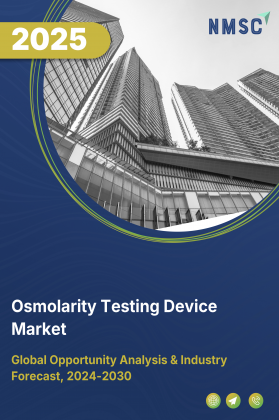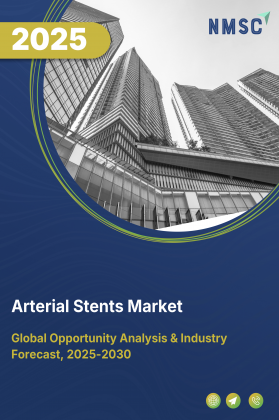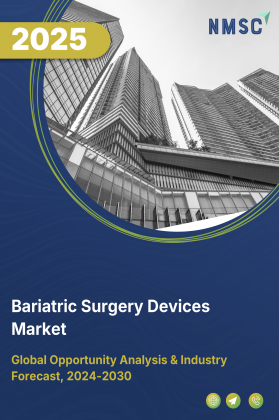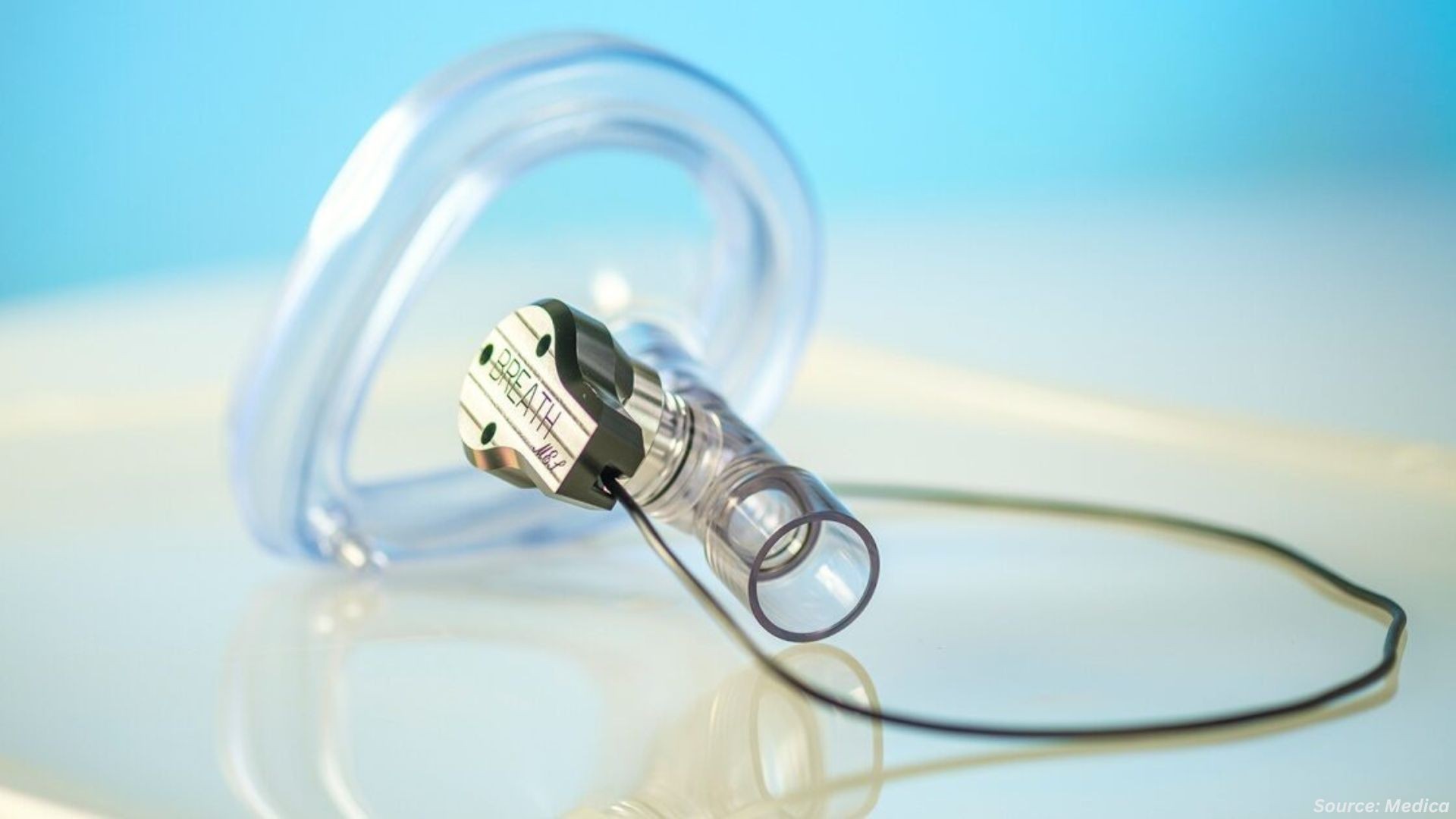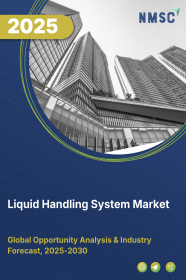
Liquid Handling System Market by Type (Automated Liquid Handling, Manual Liquid Handling, and Semi-Automated Liquid Handling), by Product Type (Automated Liquid Handling Systems, Small Devices and Others), by Application (Drug Discovery and Development, Genomics and Others), and by End User (Pharmaceutical and Biotechnology Companies, Academic and Research Institutes and Others) – Global Opportunity Analysis and Industry Forecast 2025–2030
Liquid Handling System Market Overview
The global Liquid Handling System Market size was valued at USD 5.21 billion in 2024 and is predicted to reach USD 5.57 billion by the end of 2025. The industry is predicted to reach USD 7.77 billion by 2030 with a CAGR of 6.9% from 2025 to 2030.
The liquid handling system market is evolving rapidly as automation, precision, and scalability become central to life sciences and diagnostic workflows. Government-funded research programs, rising public healthcare investments, and a growing need for accuracy in complex bioassays are accelerating the adoption of automated systems across laboratories worldwide. While high capital costs remain a challenge, particularly for budget-constrained institutions, the integration of AI-driven technologies is opening new opportunities for scalable and intelligent liquid handling solutions. As key players focus on developing systems that meet the demands of genomics, proteomics, and personalized medicine, the market continues to expand across research, clinical, and industrial domains.
Surge in Government-Funded Research Initiatives Drives Market Growth
One of the key driving forces for the market is the rising scale and frequency of government-backed research and academic projects. Public agencies are increasingly investing in life sciences, particularly genomics, proteomics, and infectious disease studies, all of which require precise liquid handling. For instance, the Indian Council of Medical Research (ICMR) and National Institutes of Health (NIH) in the U.S. fund numerous laboratory programs that utilize automated liquid handling systems for viral RNA extraction, PCR prep, and serological assays. The Department of Biotechnology (DBT) in India, under its Biotech Labs Program, has also supplied robotic pipetting systems to national research labs to accelerate sample processing efficiency. These government efforts significantly expand the addressable market size for liquid handling technologies.
Rising Public Healthcare Investment in Diagnostics Drives Market Expansion
The COVID-19 pandemic revealed critical gaps in diagnostic preparedness and spurred record-level government spending in laboratory infrastructure worldwide. Agencies such as the Centers for Disease Control and Prevention (CDC) and the World Health Organization (WHO) have supported the installation of automated liquid handling systems in regional virology and epidemiology labs. The CDC’s Advanced Molecular Detection (AMD) program, for example, funds automation tools that improve testing throughput and accuracy. These programs are boosting the market growth potential by embedding liquid handling technology deeper into national diagnostic frameworks, especially in low- and middle-income countries.
Growing Accuracy Needs in High-Precision Bioassays Fuel Market Trends
Government-affiliated institutes conducting clinical trials and molecular biology research demand exact reproducibility, especially in assays like qPCR, ELISA, and next-generation sequencing. Automated liquid handling systems are indispensable in these settings. For instance, the Indian Institute of Science (IISc) and various CSIR labs have procured automated pipetting stations for use in advanced bioassay research under government-funded programs. These platforms reduce human error, increase process speed, and ensure consistency, key metrics for research repeatability and validation. This push towards automation is directly tied to government-supported lab modernization drives, creating sustained demand across the global industry.
High Capital Investment Hinders Liquid Handling System Market Demand
Despite their operational advantages, advanced liquid handling systems come with high upfront costs. These include installation, calibration, user training, and recurring maintenance. Public hospitals and academic labs with limited budgets often delay or restrict such purchases, impacting wider adoption. Even though government subsidies exist in some regions, the capital expenditure remains a barrier to entry, especially for Tier 2 and Tier 3 institutions.
Introduction of AI-Enabled Automation Modular Liquid Handling System Creates Opportunity for Market Growth
The shift toward personalized medicine is fueling demand for advanced liquid handling systems, with AI integration emerging as a key enabler. Precision healthcare initiatives such as the U.S. Precision Medicine Initiative and India’s Genome India Project depend on high-throughput genomic and biomarker analysis, requiring reliable and automated liquid handling solutions. The incorporation of AI enhances system efficiency through real-time decision-making, error reduction, and workflow optimization. As healthcare providers and research institutions adopt AI-powered platforms to support tailored diagnostics and treatments, vendors in the market have a growing opportunity to deliver intelligent, scalable solutions aligned with the future of precision medicine.
A notable example is the 2023 launch of Opentrons' Flex System, an AI-compatible, modular liquid handling platform designed to streamline workflows in genomics and diagnostics labs. As healthcare providers and research institutions adopt AI-powered platforms to support tailored diagnostics and treatments, vendors in the market have a growing opportunity to deliver intelligent, scalable solutions aligned with the future of precision medicine.
Market Segmentation and Scope of Study
The liquid handling system market report is segmented on the basis of type, product type, application, end user, and regions. On the basis of type, the market is divided into automated liquid handling, manual liquid handling, and semi-automated liquid handling. On the basis of product type, the market is divided into automated liquid handling systems, small devices, and consumables. Automated liquid handling systems are further divided into standalone workstations and integrated workstations. Small devices are further segmented into pipettes, burettes, dispensers, and others. Pipettes are further categorized into electronic pipettes, manual pipettes, and pipette controllers. Consumables are further segmented into reagents, disposable tips, tubes and plates, and others. On the basis of application, the market is segmented into drug discovery and development, genomics, clinical diagnostics, proteomics, forensics, and others. On the basis of end user, the market is divided into pharmaceutical and biotechnology companies, academic and research institutes, hospitals and diagnostic laboratories, and contract research organizations (CROs). Regional breakdown and analysis of each of the aforesaid segments includes regions comprising of North America, Europe, Asia-Pacific, and RoW.
Geographical Analysis
North America holds a significant share in the global liquid handling system market, underpinned by advanced healthcare infrastructure, high R&D investment, and strong adoption of precision medicine. The U.S. continues to lead due to initiatives like the Precision Medicine Initiative and growing demand for automated sample preparation in genomic research. A notable development includes Revvity’s launch of the Fontus Automated Liquid Handling Workstation in July 2023, tailored to streamline NGS and biomarker workflows. As the demand for high-throughput and error-free liquid dispensing rises, North America is expected to maintain its leadership in terms of market size and technological advancement. The integration of AI and robotics is further expanding growth potential, reinforcing the region’s dominant industry growth.
Europe is experiencing steady growth in the market, supported by a strong biotechnology base, increased R&D funding, and rising demand for laboratory automation. Countries like Germany, the U.K., and France are prioritizing high-precision tools for diagnostics and drug development, especially in the wake of increased attention on pandemic preparedness and personalized medicine programs. The European market is also witnessing notable product advancements. In late 2023, SPT Labtech introduced the Firefly, a compact all-in-one liquid handler optimized for next-generation sequencing (NGS) workflows, specifically catering to mid-sized labs. This innovation supports Europe’s trend toward efficient, space-saving solutions in genomics. The region's emphasis on quality control, compliance with regulatory standards, and sustainable lab practices continues to shape market trends, contributing significantly to the overall industry size in Europe.
The Asia-Pacific liquid handling system market is undergoing rapid expansion, fueled by government-backed genomics programs, a rising biotechnology sector, and the widespread push for lab automation across clinical and research domains. Major economies such as China, India, Japan, and South Korea are investing in precision medicine infrastructure. India’s Genome India Project, for example, is driving demand for scalable and automated liquid handling systems for large-scale genetic sequencing. In early 2025, DISPENDIX unveiled the I.DOT LT at SLAS 2025, bringing enhanced dispensing accuracy to emerging markets across Asia-Pacific. The region's growing pool of skilled researchers and the increasing establishment of biopharmaceutical R&D centers are improving the market share. As cost-effective automation gains traction, Asia-Pacific is set to be a major contributor to future market growth potential.
The Rest of the World (RoW) segment, encompassing Latin America, the Middle East, and Africa, is gradually unlocking new opportunities for liquid handling system manufacturers. Growth in this region is supported by expanding life sciences education, increased diagnostics demand, and rising collaborations with global research organizations. Though still in the early stages compared to developed markets, countries such as Brazil, South Africa, and the UAE are investing in laboratory modernization and clinical trial capabilities. In mid-2023, Revvity launched the Fontus Automated Liquid Handling Workstation, tailored for flexible deployment in both developed and emerging labs, a move that aligns with the growing need for adaptable and scalable systems across RoW. As infrastructure improves and global companies increase their footprint in these regions, the industry size in RoW is expected to grow steadily, driven by both public health initiatives and academic research investments.
Strategic Trends in the Liquid Handling System Market
Key players in the global liquid handling system industry are pursuing a mix of strategic partnerships, technological innovation, and geographic expansion to strengthen their market share and address evolving laboratory demands. Companies such as Thermo Fisher Scientific, Eppendorf, Tecan Group, Agilent Technologies, and Hamilton Company are heavily investing in automation, artificial intelligence (AI), and cloud-based solutions to enhance system performance and user experience.
For instance, SPT Labtech’s 2023 launch of the Firefly system introduced a compact, high-throughput liquid handler tailored for next-generation sequencing (NGS), while DISPENDIX presented the I.DOT LT in early 2025, emphasizing accuracy and flexibility in dispensing technology. Despite these advancements, challenges such as high initial costs, integration complexities with legacy lab equipment, and the need for specialized training persist, especially for labs in emerging markets.
However, the growth potential remains substantial. The rising focus on personalized medicine, increased clinical diagnostics automation, and expanding applications in drug discovery are opening new avenues. Strategic collaborations with academic and research institutions, united with demand for low-volume, precision-based systems, position the industry for long-term growth. These market trends signal that a vendor capable of offering scalable, AI-driven, and user-friendly systems will lead the future trajectory of the industry globally.
Key Benefits
-
The report provides quantitative analysis and estimations of the liquid handling system market from 2025 to 2030, which assists in identifying the prevailing industry opportunities.
-
The study comprises a deep-dive analysis of the current and future liquid handling system market trends to depict prevalent investment pockets in the Liquid Handling System market.
-
Information related to key drivers, restraints, and opportunities and their impact on the liquid handling system trend is provided in the report.
-
Competitive analysis of the key players, along with their market share is provided in the report.
-
SWOT analysis and Porters Five Forces model is elaborated in the study.
-
Value chain analysis in the market study provides a clear picture of roles of stakeholders.
Liquid Handling System Market Key Segments
By Type
-
Automated Liquid Handling
-
Manual Liquid Handling
-
Semi-automated Liquid Handling
By Product Type
-
Automated Liquid Handling Systems
-
Standalone Workstations
-
Integrated Workstations
-
-
Small Devices
-
Pipettes
-
Electronic Pipettes
-
Manual Pipettes
-
Pipette Controllers
-
-
Burettes
-
Dispensers
-
Others
-
-
Consumables
-
Reagents
-
Disposable Tips
-
Tubes and Plates
-
Others
-
By Application
-
Drug Discovery and Development
-
Genomics
-
Clinical Diagnostics
-
Proteomics
-
Forensics
-
Others
By End User
-
Pharmaceutical and Biotechnology Companies
-
Academic and Research Institutes
-
Hospitals and Diagnostic Laboratories
-
Contract Research Organizations (CROs)
By Region
-
North America
-
The U.S.
-
Canada
-
Mexico
-
-
Europe
-
The UK
-
Germany
-
France
-
Italy
-
Spain
-
Denmark
-
Netherlands
-
Finland
-
Sweden
-
Norway
-
Russia
-
Rest of Europe
-
-
Asia-Pacific
-
China
-
Japan
-
India
-
South Korea
-
Australia
-
Indonesia
-
Singapore
-
Taiwan
-
Thailand
-
Rest of Asia-Pacific
-
-
RoW
-
Latin America
-
Middle East
-
Africa
-
Key Players
-
Thermo Fisher Scientific Inc.
-
Agilent Technologies, Inc.
-
Hamilton Company
-
DH Life Sciences, LLC
-
PerkinElmer, Inc.
-
Eppendorf SE
-
QIAGEN
-
Tecan Trading AG
-
Corning Incorporated
-
Aurora Biomed Inc.
-
Bio-Rad Laboratories, Inc.
-
METTLER TOLEDO
-
Analytik Jena GmbH+Co. KG
-
FORMULATRIX
-
Gilson Incorporated
REPORT SCOPE AND SEGMENTATION:
|
Parameters |
Details |
|
Market Size in 2024 |
USD 5.21 Billion |
|
Revenue Forecast in 2030 |
USD 7.77 Billion |
|
Growth Rate |
CAGR of 6.9% from 2025 to 2030 |
|
Analysis Period |
2024–2030 |
|
Base Year Considered |
2024 |
|
Forecast Period |
2025–2030 |
|
Market Size Estimation |
Billion (USD) |
|
Growth Factors |
|
|
Countries Covered |
28 |
|
Companies Profiled |
15 |
|
Market Share |
Available for 10 companies |
|
Customization Scope |
Free customization (equivalent to up to 80 working hours of analysts) after purchase. Addition or alteration to country, regional, and segment scope. |
|
Pricing and Purchase Options |
Avail customized purchase options to meet your exact research needs. |

















 Speak to Our Analyst
Speak to Our Analyst



